Atomic Veggies: The Other Kind of GMO
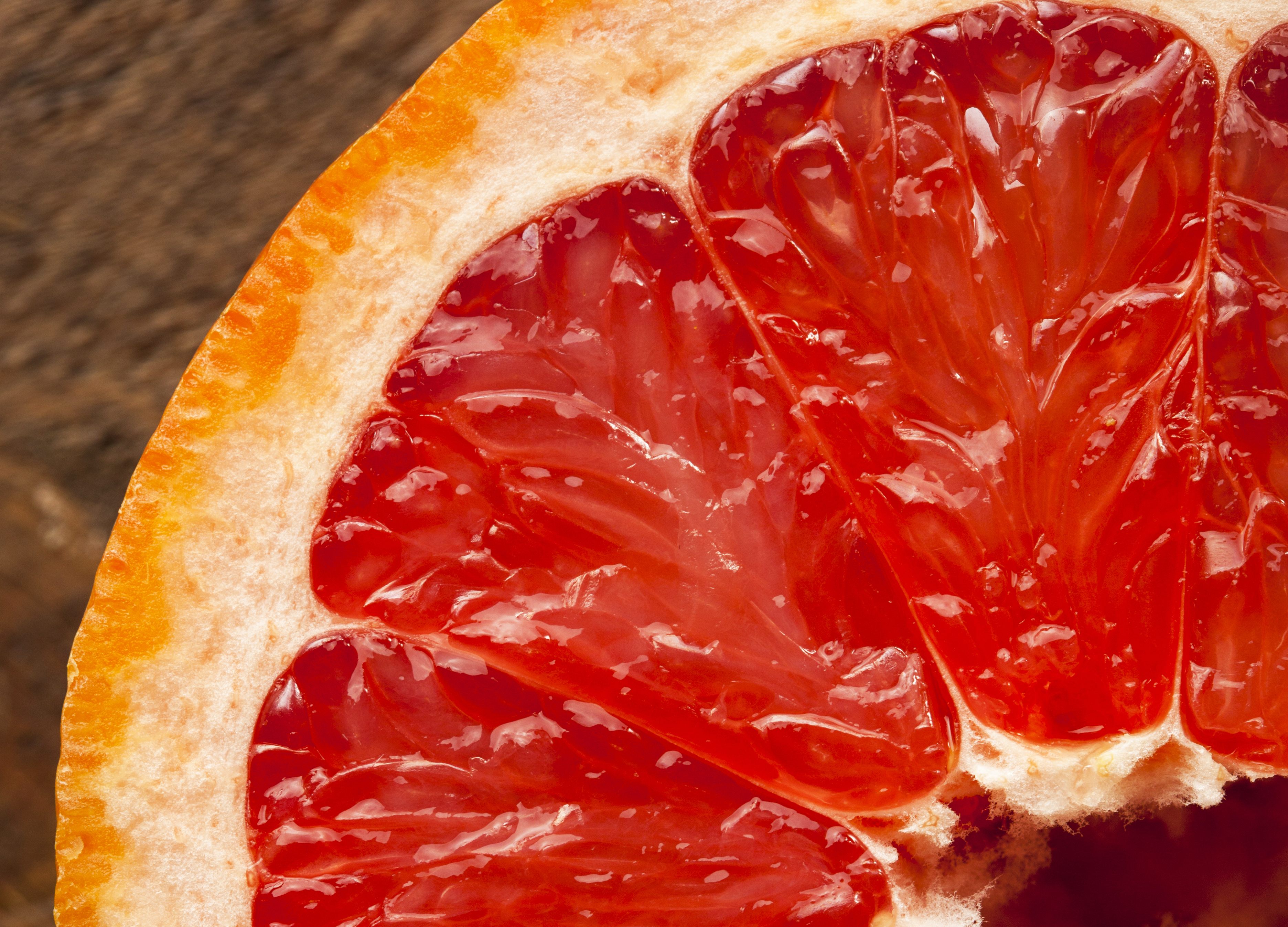
Atomic grapefruit. (Photo: Brent Hofacker/shutterstock.com)
In 1959, during a dinner party at the Royal Commonwealth Society in London, Muriel Howorth, atomic enthusiast, served her guests peanuts. These peanuts were unusually large, and, as Paige Johnson recounts in the British Journal for the History of Science, special. Named N.C. 4x, this variety of peanut had been created by a scientist in North Carolina, who had subjected peanut seeds to radiation—17 times the amount that could kill a person, a local paper reported—until he had found a plant with qualities he wanted.
Unfortunately for the host, though, the dinner party guests—who included a representative of the United Kingdom Atomic Energy Authority—did not “seem to appreciate that the nut was … the outcome of an immense achievement.” Howarth wrote about the affair in her book, Atomic Gardening (which Johnson will soon re-release, as an e-book); besides the unusual size of the nut, diners would have no need to remark on their fare.
Mutant peanuts, it turned out, tasted quite like any other peanut.
A host planning an atomic dinner party today would have more options. She could set the table with mutant chrysanthemums. Perhaps she would start with a grapefruit salad, and move onto fettucine with peas and mint. For dessert, rice pudding (made with whisky, of course). If guests wanted beer, they’d have options: Caledonian Golden Promise, an English pale ale or Dangerous Man Golden Promise, which has a “clean sweetness with soft bread tones,” or one of the many others malted with Golden Promise barley. But like Howorth’s guests, anyone sitting down to this spread might still not appreciate the accomplishment—they’d be eating food they’d had many times before.
Since the 1950s and 60s, mutation breeding has created around 3,000 commercially available varieties of plant—durum wheat, rice, soybeans, barley, chickpeas, white beans, peaches, bananas, papayas, tomatoes, sunflowers, and more. Almost any grapefruit you’ve bought was probably a mutant: if it’s labeled Star Ruby, Rio Red or Rio Star, it’s one of the 75 percent of Texas grapefruits that has a mutant strain in its past. And while improving crops by flooding them with radiation might seem like a relic of the atomic age, it’s still very much thriving today—even (and especially) as genetically modified food has been shunned.
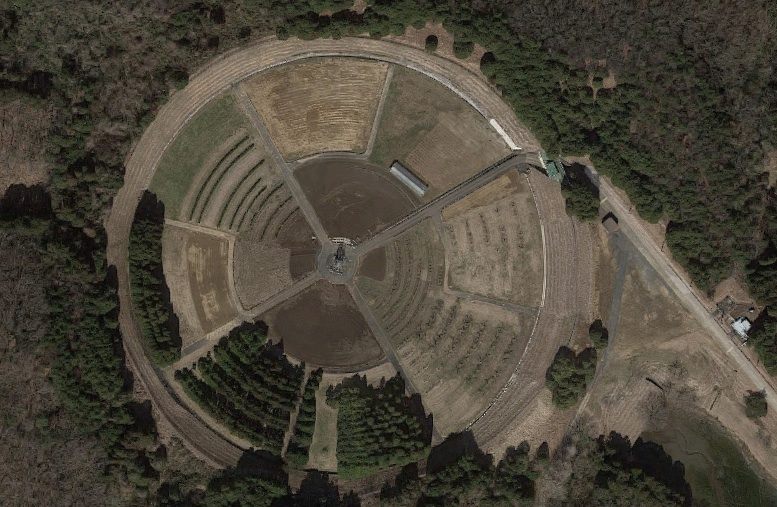
Japan’s Gamma Field, at the Institute of Radiation Breeding (Image: Google, 2015)
By the time Walton C. Gregory perfected his atomic peanut in 1959, mutation breeding was on the rise. Just three decades earlier, Lewis Stadler, an American geneticist, first published his work on inducing mutations in barley, corn, and other grains by exposing them to X-rays. A team of Swedish crop scientists picked up on his work and started pushing to create viable variants that actually improved agriculture—that might, for instance, produce more in the short Scandinavian growing season or resist crop-killing diseases.
Soon, mutant varieties of crops like white mustard, fodder peas, and rapeseed were being released in Sweden; in 1957, a mutant variety of navy bean was released in the U.S., followed by Gregory’s N.C. 4x peanut, in 1959.
It was, North Carolina State College trumpeted in a press release, “one of the first times that an improved strain of any living thing has been developed through atomic research in the United States”—a milestone in “the peaceful use of atomic energy.”
By then, it was becoming more common to induce mutations with gamma rays, in large fields set up specifically for that purpose. Brookhaven National Lab ran what Popular Mechanics called “the world’s first radioactive farm”—a 10-acre field with radioactive cobalt at the center, first set up in 1949. (This is where Gregory sent his peanuts to be irradiated.) There were similar fields in Virginia and Florida, in Norway and Russia, Costa Rica and Argentina—eventually, there would be more than 20 gamma fields working across the world.
Mutation breeding works by, essentially, increasing the rate at which radiation-induced mutations occur. Mutations happen at a low rate in the normal course of existence and reproduction; occasionally, even without human intervention, radiation will be the source of those mutations. Mostly, those mutations will either make no difference or will cause the plant to fail at life. But a few of those mutations will help a plant thrive, and they will spread through the population. (That’s evolution!)
By bombarding plants with higher levels of radiation, humans are making these mutations happen at a much higher rate, increasing the chances that an actual worthwhile mutation will occur. Then, when they spot one, they pick out that plant and propagate that variety. It’s akin to the genetic modification practiced by bioag companies like Monsanto, except that the scientists don’t control which genes are changed or where they go. There are limits to what can be changed: in mutation breeding, no new genetic material is introduced, unlike in biotechnology labs that, for example, might use DNA swiped from a glowing jelly fish to make a plant glow.
But it can make noticeable changes in a plant. For example, Popular Mechanics described one of Gregory’s other mutation breeding projects:
“When Mrs. Gregory was nostalgic for the hibiscus of her Florida childhood, Dr. Gregory planted some but found that they didn’t bloom until October, a few weeks before the frost killed them. By irradiating a few hundred plants, he produced a hibiscus that blooms in the late summer.”
Crops developed through mutation breeding usually do similar work, though, to GMO crops developed with altruistic ends—they’re often meant to grow in places where they wouldn’t otherwise thrive, or resist pests, or improve yields. In 1968, for instance, Japanese scientists released the Reimei variety of rice for cultivation. As a semi-dwarf variety, the plant put more energy towards producing rice than it would if it grew taller. In the U.S., Calrose-76 rice had similar qualities to recommend it: its short stature, stiff straw, indifference to the day’s length, and its high yield when fertilized. Both became widely planted—and bred into other varieties. In Japan, most of the rice varieties grown today have a mutant allele from Reimei.
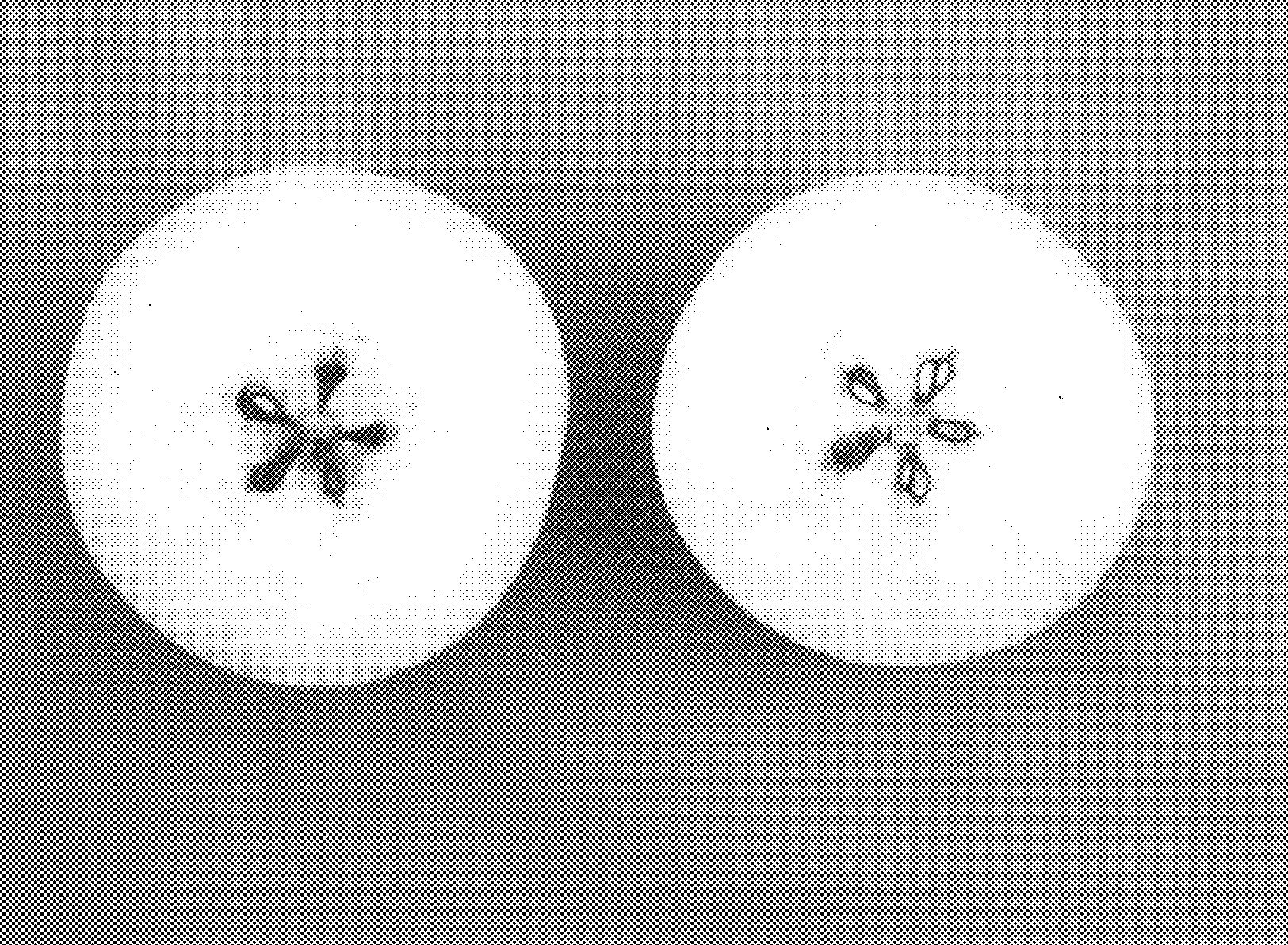
A cross-sectional view of fruit of the new cultivar of Japanese pear tree. (Photo: USPP11656/Google Patents)
Today, Japan’s Institute for Radiation Breeding has the world’s largest radiation field, and still, Monday through Friday, radiation starts at noon and lasts until 8 p.m. Called the Gamma Field, these 7.75 acres are home to mulberry trees, fruit trees, tea trees, and other large plants; the IRB also has a Gamma Greenhouse and a Gamma Room for more acute and specific exposures. As of 2009, gamma radiation had helped created more than 145 mutant varieties in Japan—and hundreds more that were cross-bred with non-mutants before being released.
Since its heydey in the 1960s, mutation breeding has never really disappeared, even though many of the gamma fields were shut down. One of its most recent triumphs is the Gold Nijisseiki, a variety of Japanese pear that resists black spot disease. And it’s actually grown in a lot of ways, as more than 60 percent of registered mutant varieties were released after 1985, according to the Food and Agriculture Organization of the United Nations, which keeps a database of mutant varieties. (Johnson, who’s still working to chronicle the history of atomic gardening, is also working on a broad overview of the plants known to be involved in the atomic research trials.) In the mid-90s, almost three-quarters of the durum wheat grown in Italy was a mutant variety, and across Europe, most barley has dwarfing genes from mutant Golden Promise and Diamant varieties. Most of the white beans grown in North America have a mutant gene in them, too.
Recently, mutant breeding’s enjoyed a bit of a Renaissance, too, as biomolecular advances have enabled more targeted mutations and quick assessments of what’s changed in the plant’s genome. Instead of waiting for a plant to grow, a scientist can quickly recognize changes in the mutated plant’s DNA sequence and decide whether it’s the mutation she wants or not.
And there’s a whole new strand of mutation breeding that could become relevant in the near future—mutations created by sending plants to space, where the background radiation levels are much higher than on Earth. As astronauts spend more time in space and both NASA and private companies think about how to feed Mars explorers, growing plants in space is becoming increasingly important—and mutations more likely. On Mars, most likely, any dinner party with fresh ingredients would be a mutant meal.
Gastro Obscura covers the world’s most wondrous food and drink.
Sign up for our regular newsletter.





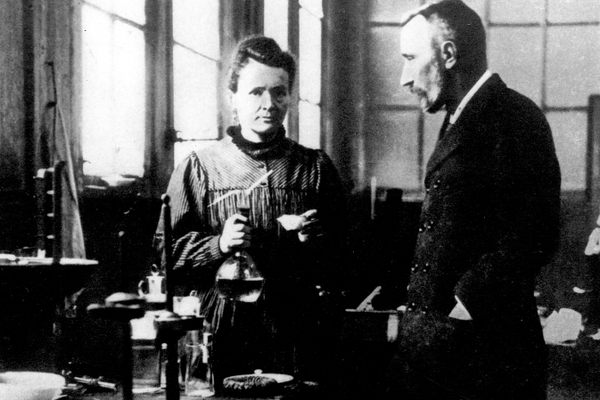
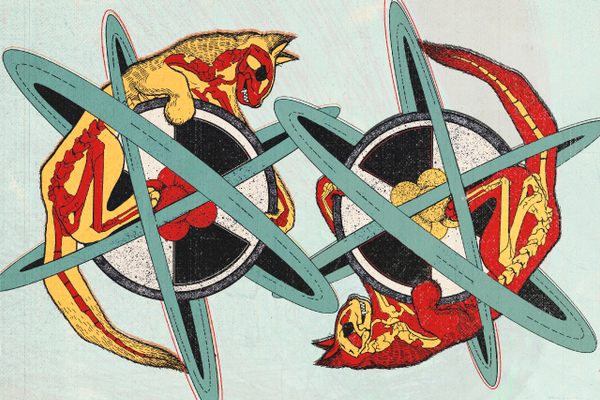










Follow us on Twitter to get the latest on the world's hidden wonders.
Like us on Facebook to get the latest on the world's hidden wonders.
Follow us on Twitter Like us on Facebook